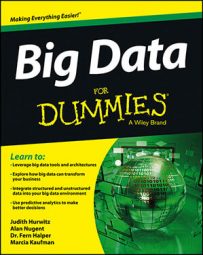What does your business now do with all the data in all its forms? Big data requires many different approaches to analysis, traditional or advanced, depending on the problem being solved. Some analyses will use a traditional data warehouse, while other analyses will take advantage of advanced predictive analytics. Managing big data holistically requires many different approaches to help the business to successfully plan for the future.
Analytical data warehouses and data marts for big data
After a company sorts through the massive amounts of data available, it is often pragmatic to take the subset of data that reveals patterns and put it into a form that’s available to the business. These warehouses and marts provide compression, multilevel partitioning, and a massively parallel processing architecture.
Big data analytics
The capability to manage and analyze petabytes of data enables companies to deal with clusters of information that could have an impact on the business. This requires analytical engines that can manage this highly distributed data and provide results that can be optimized to solve a business problem. Analytics can get quite complex with big data.
For example, some organizations are using predictive models that couple structured and unstructured data together to predict fraud. Social media analytics, text analytics, and new kinds of analytics are being utilized by organizations looking to gain insight into big data.
Reports and big data visualization
Organizations have always relied on the capability to create reports to give them an understanding of what the data tells them about everything from monthly sales figures to projections of growth. Big data changes the way that data is managed and used.
If a company can collect, manage, and analyze enough data, it can use a new generation of tools to help management truly understand the impact of how these data elements offer context based on the business problem being addressed. Reporting and data visualization become tools for looking at the context of how data is related and the impact of those relationships on the future.
Big data applications
Traditionally, the business expected that data would be used to answer questions about what to do and when to do it. Data was often integrated as fields into general-purpose business applications. With the advent of big data, this is changing. Now, the development of applications are being designed specifically to take advantage of the unique characteristics of big data.
Some of the emerging applications are in areas such as healthcare, manufacturing management, traffic management, and so on. What do all these big data applications have in common? They rely on huge volumes, velocities, and varieties of data to transform the behavior of a market.
In healthcare, a big data application might be able to monitor premature infants to determine when data indicates when intervention is needed. In manufacturing, a big data application can be used to prevent a machine from shutting down during a production run. A big data traffic management application can reduce the number of traffic jams on busy city highways to decrease accidents, save fuel, and reduce pollution.

